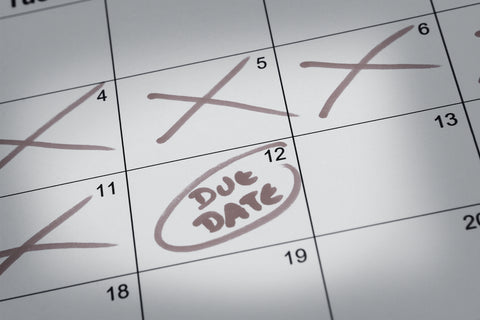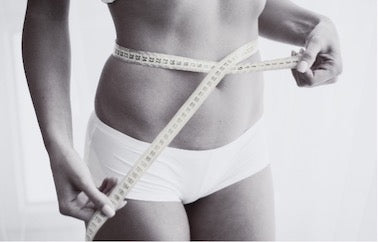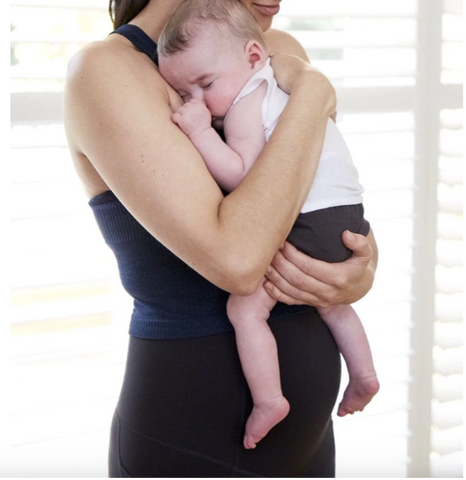4 min read
BY LAUREN BRENTON | Clinical Midwifery Specialist | Childbirth Educator |
There are many myths and misconceptions floating around about pregnancy and childbirth. From how big your baby is to when your due date is or how to get your prebaby body back, these myths can cause unnecessary stress and anxiety for expecting moms.
We want to make sure mamas are armed with the right information. We asked clinical and endorsed midwife Lauren Brenton to debunk some of the most common pregnancy misconceptions.
1. Your baby is “measuring BIG” inutero (in the womb)

Being told your baby is big when they’re still in the womb can actually do more harm than good! Ultrasound scans are inaccurate in predicting the size of your baby and become more inaccurate the bigger the baby grows.
So much so, that when predicting a baby with a weight of 4500g or more, they’re only accurate in 33-44% of cases. The only accurate way of measuring your baby is through placing it on the scales after birth.
Ultrasound scans for suspected “big baby” (>4500g) in the absence of diabetes, can actually be more harmful. It can not only lead to an increased risk of interventions (induction, forceps, vacuum, or caesarean section) that may not be necessary, but it can also cause that mother to doubt her own ability to give birth.
On the other hand, true macrosomic babies (babies who weigh more than 4500g) carry an increased risk of shoulder dystocia, postpartum haemorrhage, 3rd or 4th degree tears and injuries to the baby (such as broken clavicle or damage to the nerves of the brachial plexus). A caesarean section can minimise the risk of nerve damage to the brachial plexus, but it does not eliminate the risk all together.
So, how do we know what the right thing to do is? The answer is we don’t, each individual woman should be educated on the risks vs benefits of big babies and the accuracy of ultrasound scans and be able to make the decision for her own situation based on her own birth preferences.
2. Your due date has passed, and your baby is “overdue”.

As your due date is approaching, you may be getting excited to go into labour and meet your little baby. But did you know that only 5% of babies are actually born on their due date?
Most babies are born by 42 weeks, with only 0.4% of babies being born at 42 weeks’ gestation. This means that although you may not give birth on your due date, you have a great chance of having a baby before 42 weeks.
It can be hard when your due date passes and you become “overdue”, but it is important to remember that full term is anywhere from 37-42 weeks and that is completely normal. Try not to focus on your due date as this may create unnecessary stress and you may feel deflated if you haven’t gone into labour before this date. Instead try to keep yourself busy and enjoy time with your partner, friends, and family while you await your labour beginning.
3. Your labour starts by the water breaking.

This is what happens in the movies… women are casually shopping or walking down the street and whoosh, their water breaks everywhere without any warning.
This is not usually the case in real life.
One third of women’s labours starting through their water breaking and the other two thirds starting with contractions. Sometimes, a woman’s water may break, and they don’t go into labour on their own, therefore needing an induction to encourage labour to begin. Most commonly, women will start to have contractions (where the uterus goes tight and soft in a rhythmic pattern) and that is how the labour commences. Some women’s water breaks at the start of labour, others throughout labour and some babies are even born in the sac of membranes with the water intact.
4. An epidural will slow your labour down.

Another misconception is that if you have an epidural, it will slow your labour down, but this is not always the case. For some women, having an epidural when they are in active labour can speed up their labour.
I can feel you thinking… what?! An epidural is a muscle relaxant. In some cases it may relax the muscles of the uterus which could potentially slow down or stop the contractions and thus the labour may slow or stop.
In other circumstances, if the woman is quite stressed and tense during her labour and birth, an epidural will relax her and relax her pelvic floor thus allowing labour to progress. The key message here is that there is no one size fits all and just because something didn’t work well for one person, that doesn’t mean that it won’t work well for someone else.
5. If you have one caesarean, you must have another caesarean.

It was thought that once you had a caesarean section it was too dangerous to have a vaginal birth, however this is no longer the case. Attempting a vaginal birth after a caesarean carries a slight increased risk in uterine rupture, which is why it is recommended that you are monitored continuously throughout your labour and birth.
Interestingly, in Australia around 70% of women who would like a vaginal birth after caesarean are able to achieve this. This means that it is entirely up to the woman whether she would like to try for a vaginal birth after a caesarean or whether she would like an elective repeat caesarean section. It is important to discuss your own specific risk factors and medical circumstances with your healthcare provider if you are wanting to try and achieve a vaginal birth after a caesarean section.
6. You can “bounce back” to your pre-baby body:

This is a myth we need to stop. There is no such thing as “bouncing back” to your pre-baby body. Your body is different in so many ways and this notion that women’s bodies can go back to the way they were before, is harmful to women and their families.
Our bodies go through so many changes, including our skin stretching, extra blood volume, changes in the function and position of our organs and hormonal changes. These changes mean that our bodies are perfect to house our growing baby.
Instead of focusing on “going backwards” with our bodies, it is more important to focus on how we can nourish and support our bodies in the postpartum period. By eating a well-balanced diet, doing gentle exercise, wearing compression to support our muscles to heal and resting our bodies we are best able to heal and love the body that has grown and housed our baby. Let’s change the shift from “bouncing back” to healing, supporting, and nourishing our body after birth.










